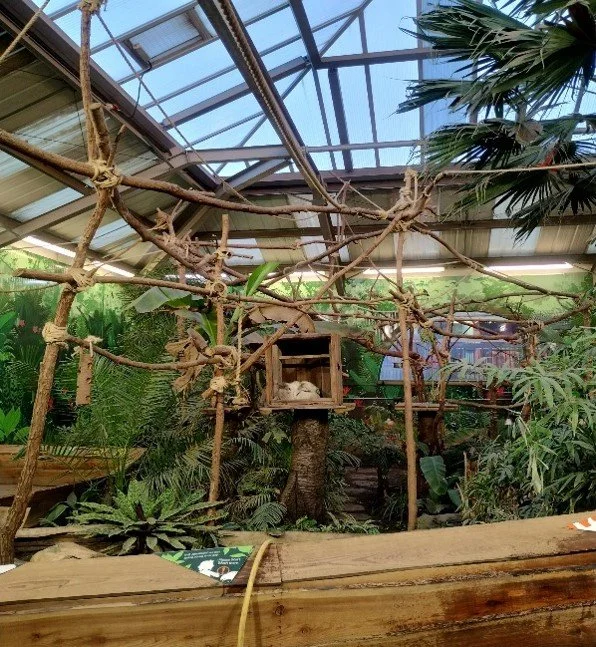February's Guest Gardener
Gardening At Edinburgh Zoo
We thought we’d bring you a something a little different this month.
Have you ever thought about the fact that Edinburgh Zoo is a selection of gardens for animals…? Well we hadn’t and we found it fascinating speaking to Jess Brown who told us what being a Gardener at Edinburgh Zoo is like.
Tell us a bit about your job.
I work in the enclosures team in the garden’s department of Edinburgh Zoo and our team is responsible for the horticultural maintenance of all the animal enclosures. This involves strimming, pruning, weeding, leaf blowing and planting. We are also responsible for any new developments or refurbishment of existing enclosures. We cut and deliver browse for all the different sections daily. In the summer that will consist of broadleaf trees. In the winter months the choice is more limited and is mainly evergreen trees and shrubs such as Quercus ilex (Holmes oak), Hoheria sextulosa, Leycesteria formosa, Viburnum tinus, or bamboo. Additionally, we build platforms and climbing structures, and make enrichment such as this willow hut for our ring-tail lemurs.
How does your role in gardening play a part in life there?
We aim for a natural look to the enclosures, so for example, we would not necessarily cut off the dead leaves off a Trachycarpus fortunii, as that would not happen in the wild. We will only remove vigorous weeds such as nettles and thistles and leave any wildflowers as long as they are not toxic. We do not want it to look too tidy and this was definitely a learning curve when I started here 7 ½ years ago.
What are some of the things you must think about when planning or maintaining an enclosure?
The most important thing is learning about plant toxicity, and what is toxic to one animal is not necessarily toxic to another. Zoo horticulture is really unlike any other kind of horticulture. We are time limited in terms of getting access for maintenance, this is normally done first thing, between 8-10, before the visitors come in. Most of the animals are required to be locked in whilst we work, however, we do work alongside some of them, which is a real privilege.
When planning a new enclosure, we approach this in the same way as a garden designer would do when planning for a client. Our client is the animal in question, and we get our brief of what the animal need from the keepers. This may include shelter from the weather, privacy from visitors, climbing structures and opportunities to exhibit natural behaviours such as scratching, rubbing and scent marking. We then do a bit of research as to geographically where its natural habitat is, and we try to represent a version of that aesthetically. Where those plants are not hardy, we will look for plants that look similar, but can cope with the Scottish weather. Additionally, we have to factor in the potential damage done by the animals both in terms of nibbling of the plants and just everyday wear and tear. Some animals are more destructive than others and we sometimes overplant to compensate for this, or plant sacrificial plants to keep them off the rest of the planting. We put in plants specifically for enrichment for example herbs, but even then, we must be mindful as herbs have medicinal properties and over consumption can be harmful, especially in pregnancy.
What do you enjoy most about the job?
It is absolutely magic to work so close to the animals and the most rewarding thing is when we have redeveloped an enclosure, or put something in for enrichment, and we then see how the animals engage with it. We know that we are making a positive contribution to that animal’s welfare.
Creating a jungle for our two-toed sloths, for which we were awarded a BIAZA (British and Irish Association of Zoos and Aquariums) gold medal.
Any tips for encouraging wildlife in other people’s garden?
Use plants that provide food and shelter, for example a silver birch will provide food and habitat for more than 300 insect species. Make a bug hotel, don’t be too tidy, leave a wild undisturbed corner. Offer a water source if you can. Avoid highly bred cultivars with little or no nectar or pollen and plant native where possible. Finally, avoid the use of weedkillers or pesticides and allow a more natural cycle of life.
If you fancy visiting Edinburgh Zoo then check out their website.


